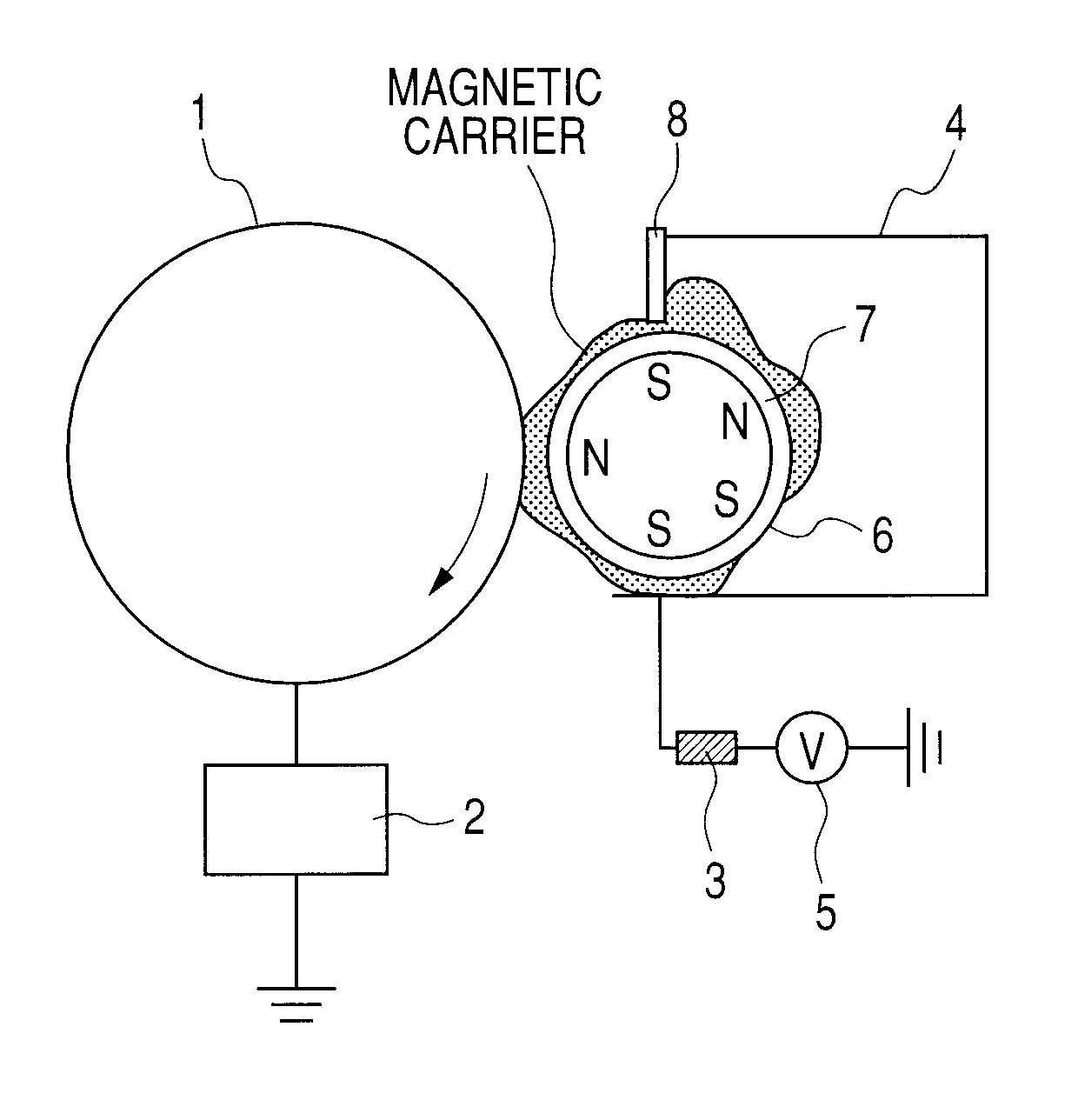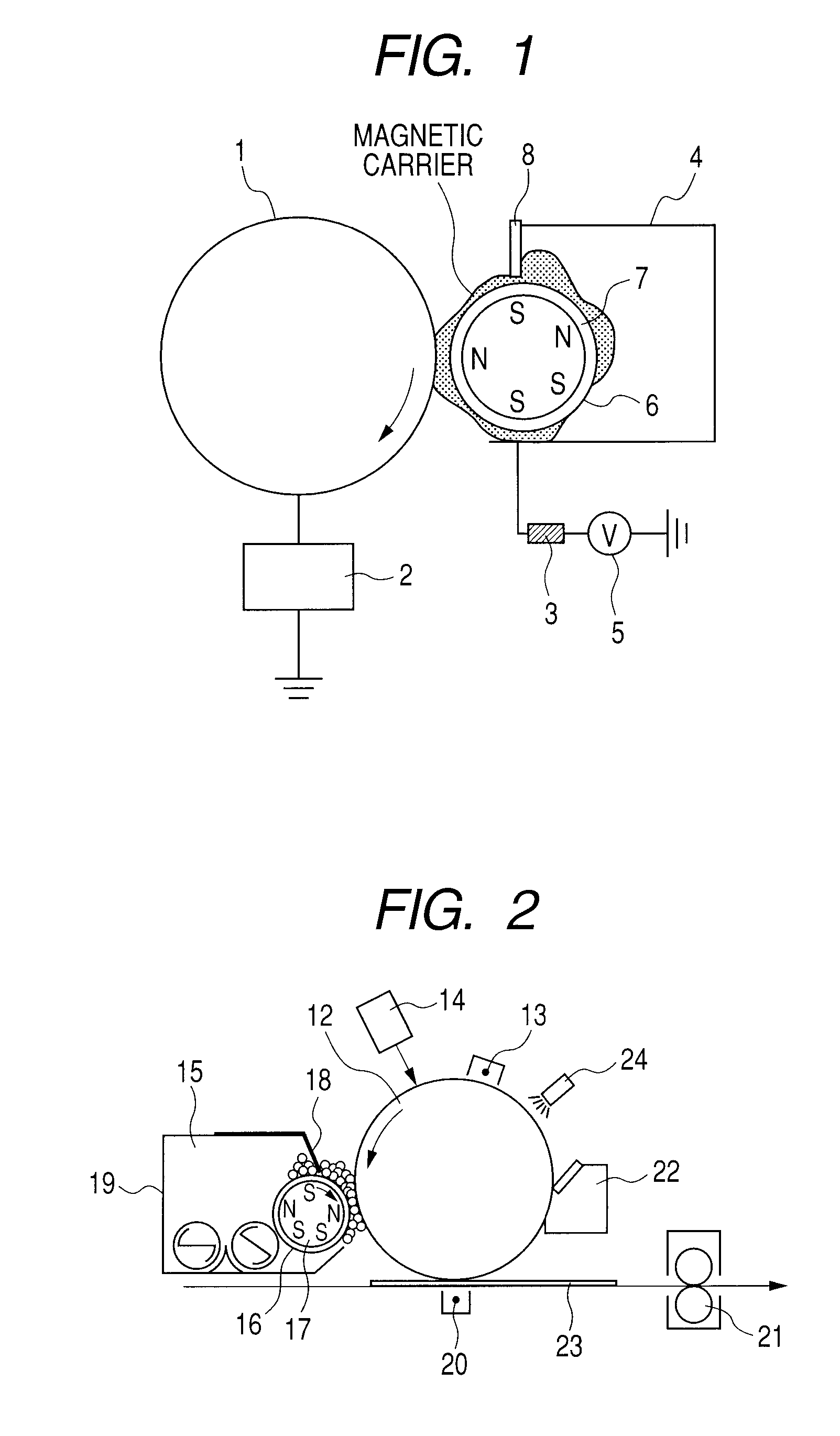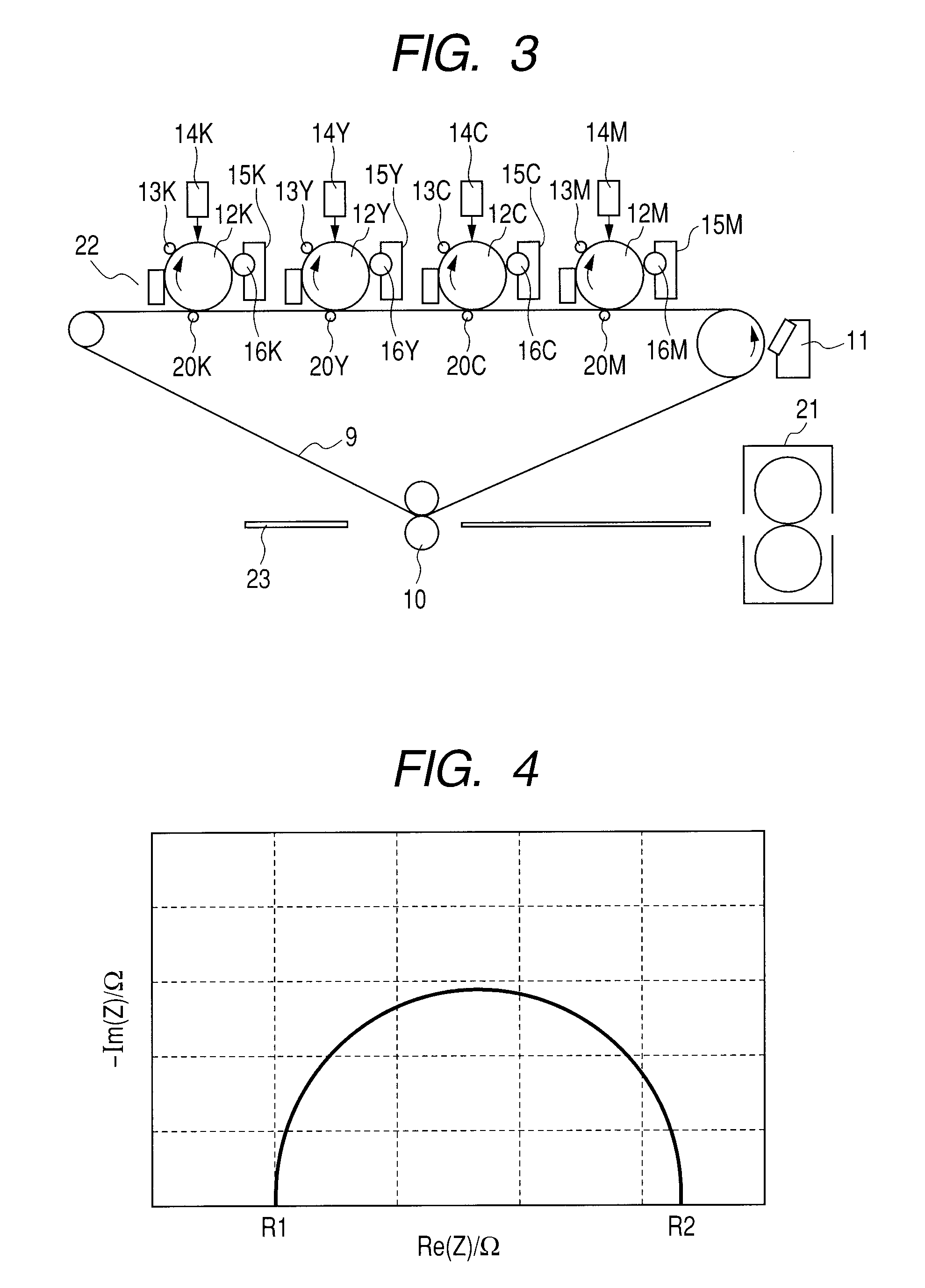Magnetic carrier, two-component developer and image forming method
a two-component developer and carrier technology, applied in the field of magnetic carrier, two-component developer and image forming method, can solve the problems of weakening the electric field applied to the two-component developer, coarse halftone images, image defects, etc., and achieves good efficiency, high-quality images, and superior development performance.
- Summary
- Abstract
- Description
- Claims
- Application Information
AI Technical Summary
Benefits of technology
Problems solved by technology
Method used
Image
Examples
production example 1
Magnetic Carrier Production Example 1
[0316]
Straight silicone resin20.0% by mass(SR2411, available from Dow Corning ToraySilicone Co., Ltd.; dynamic viscosity in 20% by masstoluene solution: 1.1 × 10−4 m2 / sec)γ-aminopropylethoxysilane 0.5% by massToluene79.0% by mass
[0317]The above materials were so mixed as to be in the above compositional ratio to obtain Resin Solution 1.
[0318]Step 1 (Resin Filling Step)
[0319]100 parts by mass of Magnetic Core Particles 1 was put into an agitating container of a universal mixing agitator manufactured by Dulton Company Limited. While keeping its temperature at 30° C. and while producing a vacuum, nitrogen was introduced thereinto. Subsequently, Resin Solution 1 was so added as to be in an amount of 10 parts by mass as a resin component, based on the mass of Magnetic Core Particles 1. Then the agitation was continued for 2 hours as it was, and thereafter the temperature was raised to 70° C. to remove the solvent. The material obtained was moved to Ju...
production example 2
Magnetic Carrier Production Example 2
[0322]In Magnetic Carrier Production Example 1, the procedure of Step 1 was repeated to obtain Filled Core Particles 2, except that Magnetic Core Particles 1 was changed for Magnetic Core Particles 2 and the amount of 10 parts by mass for the resin added was changed to 12 parts by mass, and the procedure of Step 2 was repeated to obtain Magnetic Carrier 2, except that Filled Core Particles 2 was used instead. Magnetic Carrier 2 obtained had a 50% particle diameter based on volume distribution (D50) of 40.1 μm.
production example 3
Magnetic Carrier Production Example 3
[0323]In Magnetic Carrier Production Example 1, the procedure of Step 1 was repeated to obtain Filled Core Particles 3, except that Magnetic Core Particles 1 was changed for Magnetic Core Particles 3 and the amount of 10 parts by mass for the resin added was changed to 16 parts by mass, and the procedure of Step 2 was repeated to obtain Magnetic Carrier 3, except that Filled Core Particles 1 was changed for Filled Core Particles 3. Magnetic Carrier 3 obtained had a 50% particle diameter based on volume distribution (D50) of 36.3 μm.
PUM
 Login to View More
Login to View More Abstract
Description
Claims
Application Information
 Login to View More
Login to View More - R&D
- Intellectual Property
- Life Sciences
- Materials
- Tech Scout
- Unparalleled Data Quality
- Higher Quality Content
- 60% Fewer Hallucinations
Browse by: Latest US Patents, China's latest patents, Technical Efficacy Thesaurus, Application Domain, Technology Topic, Popular Technical Reports.
© 2025 PatSnap. All rights reserved.Legal|Privacy policy|Modern Slavery Act Transparency Statement|Sitemap|About US| Contact US: help@patsnap.com



